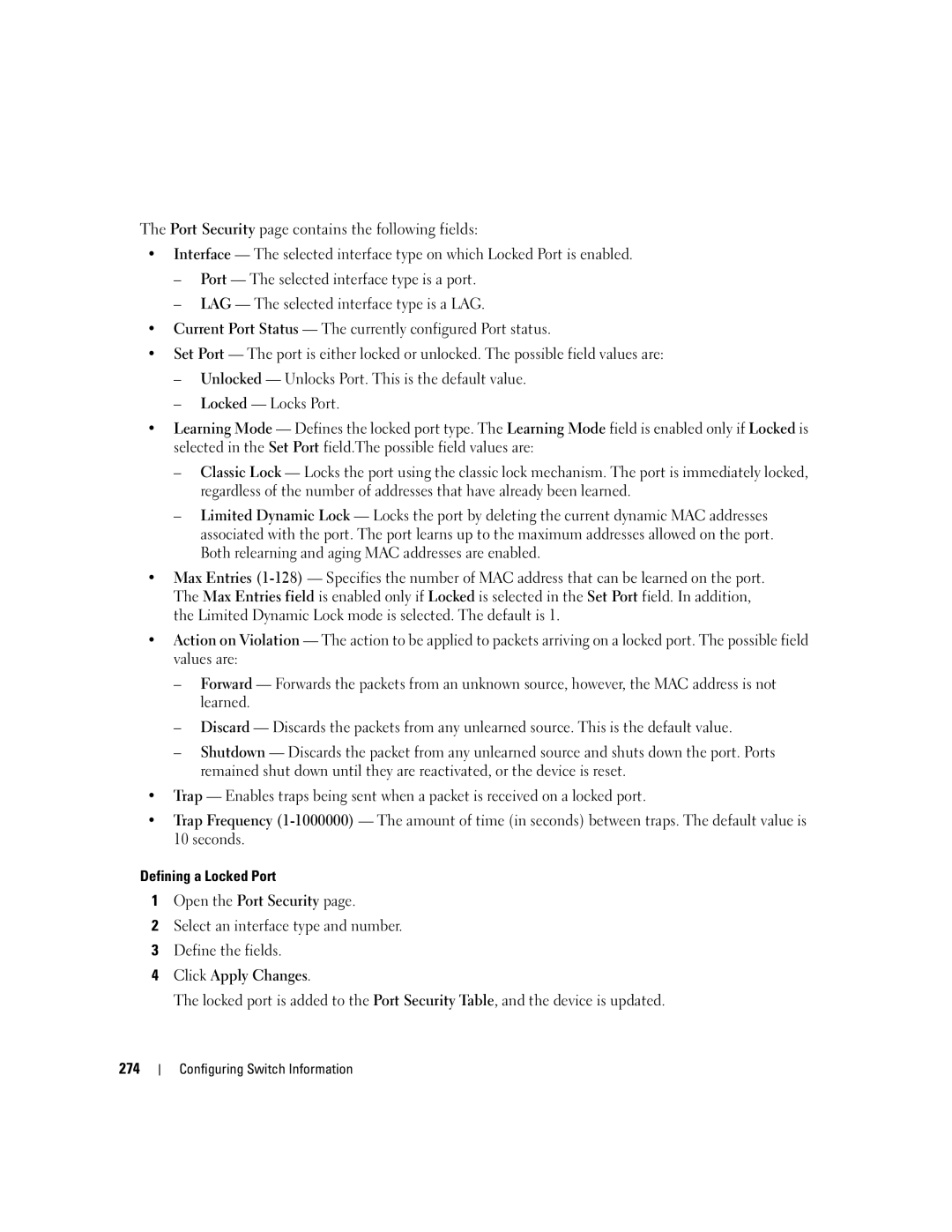The Port Security page contains the following fields:
•Interface — The selected interface type on which Locked Port is enabled.
–Port — The selected interface type is a port.
–LAG — The selected interface type is a LAG.
•Current Port Status — The currently configured Port status.
•Set Port — The port is either locked or unlocked. The possible field values are:
–Unlocked — Unlocks Port. This is the default value.
–Locked — Locks Port.
•Learning Mode — Defines the locked port type. The Learning Mode field is enabled only if Locked is selected in the Set Port field.The possible field values are:
–Classic Lock — Locks the port using the classic lock mechanism. The port is immediately locked, regardless of the number of addresses that have already been learned.
–Limited Dynamic Lock — Locks the port by deleting the current dynamic MAC addresses associated with the port. The port learns up to the maximum addresses allowed on the port. Both relearning and aging MAC addresses are enabled.
•Max Entries
•Action on Violation — The action to be applied to packets arriving on a locked port. The possible field values are:
–Forward — Forwards the packets from an unknown source, however, the MAC address is not learned.
–Discard — Discards the packets from any unlearned source. This is the default value.
–Shutdown — Discards the packet from any unlearned source and shuts down the port. Ports remained shut down until they are reactivated, or the device is reset.
•Trap — Enables traps being sent when a packet is received on a locked port.
•Trap Frequency
Defining a Locked Port
1Open the Port Security page.
2Select an interface type and number.
3Define the fields.
4Click Apply Changes.
The locked port is added to the Port Security Table, and the device is updated.
274
